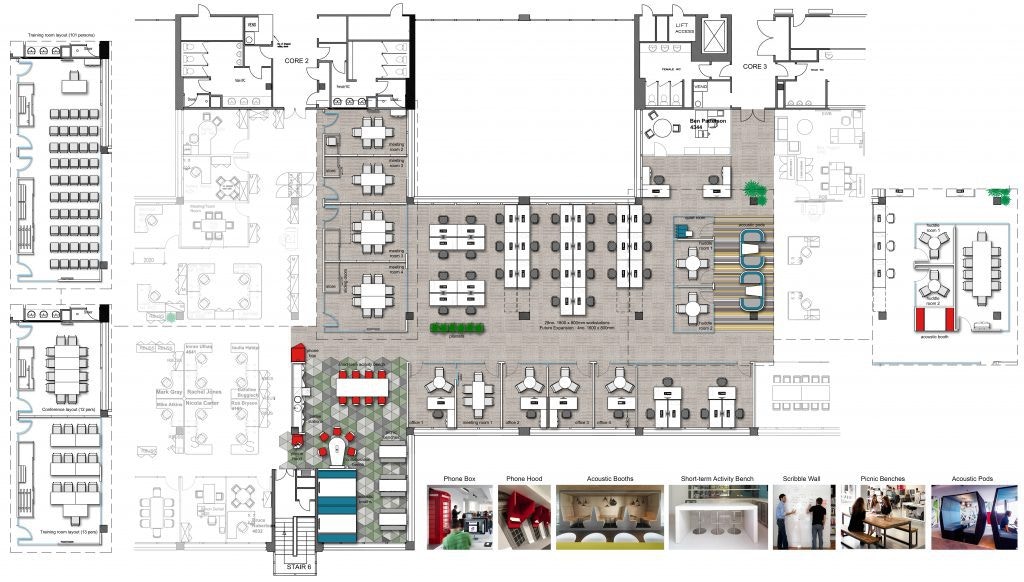What is evidence-based office design?
Unlike traditional approaches that primarily rely on client briefs and designer intuition, evidence-based design harnesses both qualitative and quantitative data to inform decisions. This method involves gathering insights through time utilisation studies, observational studies, staff surveys, workshops, and interviews. The data collected is meticulously analysed to craft office spaces that genuinely reflect the needs and preferences of the client.
Essentially, evidence-based office design collects qualitative and quantitative data from a client’s workplace through a variety of means including, time utilisation studies, observational studies, staff surveys, workshops and interviews. This data is then used by the office design team who analyse and interpret it before using it to create a space plan and office design that reflects the needs and desires of the client.


